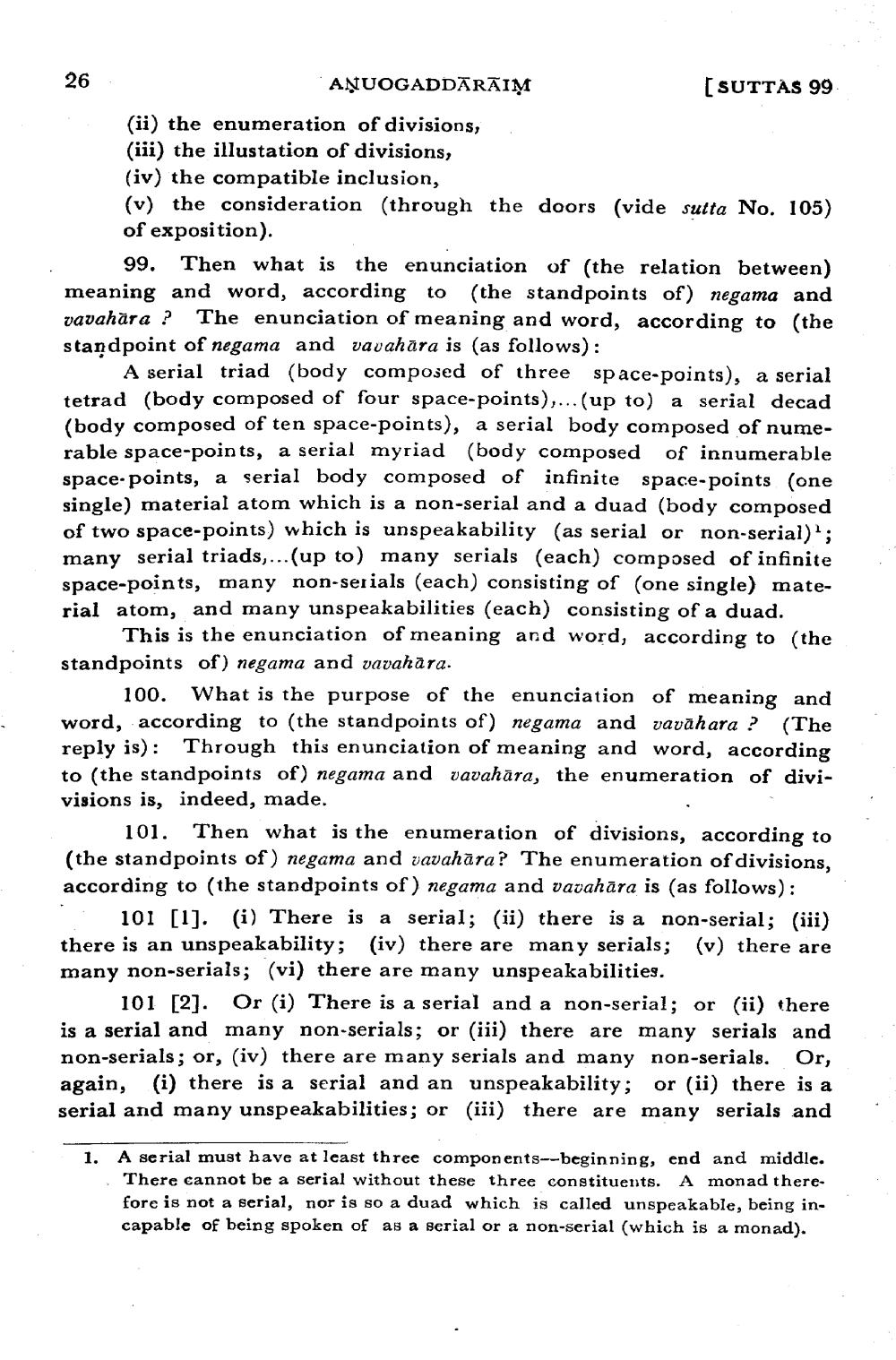________________
26
AŅUOGADDĀRĀIM
[SUTTAS 99
(ii) the enumeration of divisions, (iii) the illustation of divisions, (iv) the compatible inclusion, (v) the consideration (through the doors (vide sutta No. 105) of exposition).
99. Then what is the enunciation of the relation between) meaning and word, according to (the standpoints of) negama and vavahāra ? The enunciation of meaning and word, according to (the standpoint of negama and vavahāra is (as follows):
A serial triad (body composed of three space-points), a serial tetrad (body composed of four space-points),...(up to) a serial decad (body composed of ten space-points), a serial body composed of numerable space-points, a serial myriad (body composed of innumerable space-points, a serial body composed of infinite space-points (one single) material atom which is a non-serial and a duad (body composed of two space-points) which is unspeakability (as serial or non-serial); many serial triads,...(up to) many serials (each) composed of infinite space-points, many non-serials (each) consisting of (one single) material atom, and many unspeakabilities (each) consisting of a duad.
This is the enunciation of meaning and word, according to the standpoints of) negama and vavahara.
100. What is the purpose of the enunciation of meaning and word, according to (the standpoints of) negama and vavahara ? (The reply is): Through this enunciation of meaning and word, according to (the standpoints of) negama and vavahāra, the enumeration of divivisions is, indeed, made.
101. Then what is the enumeration of divisions, according to (the standpoints of) negama and vavahāra? The enumeration of divisions, according to (the standpoints of) negama and vavahāra is (as follows):
101 [1]. (i) There is a serial; (ii) there is a non-serial; (iii) there is an unspeakability; (iv) there are many serials; (v) there are many non-serials; (vi) there are many unspeakabilities.
101 [2]. Or (i) There is a serial and a non-serial; or (ii) there is a serial and many non-serials; or (iii) there are many serials and non-serials; or, (iv) there are many serials and many non-serials. Or, again, (i) there is a serial and an unspeakability; or (ii) there is a serial and many unspeakabilities; or (iii) there are many serials and
1. A serial must have at least three components--beginning, end and middlc.
There cannot be a serial without these three constituents. A monad therefore is not a serial, nor is so a duad which is called unspeakable, being incapable of being spoken of as a serial or a non-serial (which is a monad).




